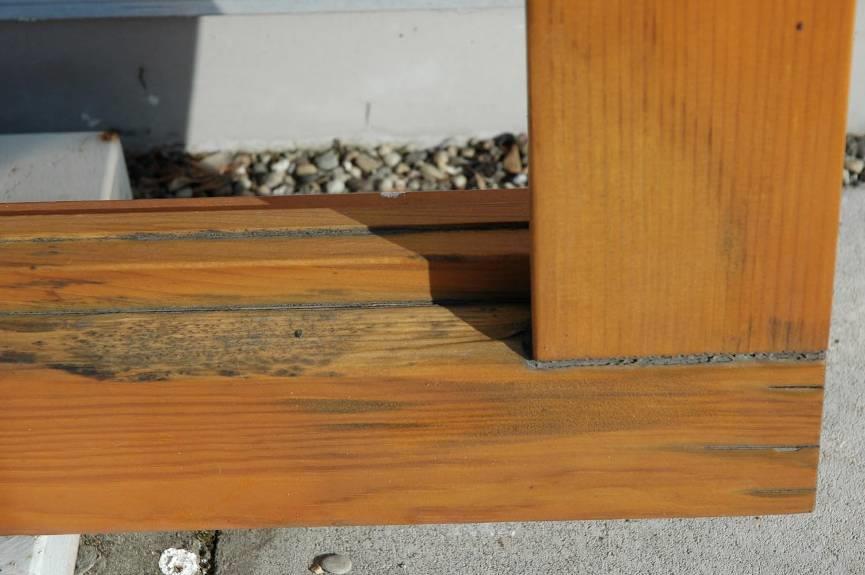Blue fungus staining your external timbers? It doesn’t have to be this way…

Blue stain on external woodwork is an all-too familiar sight. The problem is so common that many UK woodworkers assume it to be unavoidable, at least when working with softwoods and hardwoods. In this post, we’ll show how you can minimise blue staining…or avoid it completely.
Blue stain, or sapstain, is a microscopic fungus occurring naturally in most heartwoods. In the growing tree, it has no opportunity to develop. When the tree is cut down, the fungus emerges on any exposed surfaces of the lumber where it can obtain an air supply. Its growth, generally rather shallow, will be controlled by drying processes, and virtually eliminated when the wood is sanded and planed.
While fungal spores are likely to remain dormant in the wood, the application of a varnish or seal to the finished surface should in theory block the ingress of air and thus prevent future germination.
However, as anyone who has examined hastily-assembled timberframe buildings will attest, things don’t always work out that way. Blue stain often emerges at joints, appearing first as dirty-looking dark blue lines along intersections and then spreading under the coating to produce larger discoloured areas. This blue stain is not only unsightly, but also opens the way for more invasive fungi and hence serious long-term damage.
Re-treating built timbers in situ is an awkward task, so this is a case where prevention is definitely better than cure.
Blue invasion
Blue stain outbreaks occur either because the timber used was not dried sufficiently (moisture content greater than 20%) or because of structural defects like hastily-cut joints or insufficient gluing. Such defects allow air to reach the interior of a joint and thus give the fungus an opportunity to establish itself.
Of course, real-world working conditions may prevent your team from addressing either of these issues at root. If so, Redwood’s partner company Zobel, who have particular expertise in exterior woodwork treatments, offer some specialised solutions.
The first is ZowoTec® 203 Protection Primer Glazing. This is an alkyd/acrylate primer that provides a bond between the wood and the subsequent lacquer coatings, making it much harder for the fungus to spread ‘under the finish’.
The second is ZowoTec® 263 Insulating Protective Primer, which adds insulating capabilities to the basic feature set of product #203 and is specially formulated to work well with softwoods and hardwoods
As ever, Redwood offers full support and backup to woodworkers who want to experiment with these innovative products. If you’re trying to bring up an exterior woodwork project to the highest possible standard, Zobel – and Redwood – should be high on your list of priorities.
